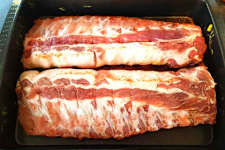As the official start of fall approaches, temperatures will throttle up to levels more typical of the middle of summer and challenge numerous record highs across the nation's midsection.
By Andrew Johnson-Levine, AccuWeather meteorologist
Published Sep. 17, 2022 8:35 AM EDT | Updated Sep. 18, 2022 2:54 PM EDT
The heartland of the United States has experienced a weather roller coaster as of late, with temperatures seemingly to quickly surge up and down as the official start of fall approaches. Moving into the new week, however, summer may not be so quick to depart for some. AccuWeather forecasters expect temperatures to surge to record-threatening territory during the first half of the week, with a surge in humidity only making the weather feel hotter.
"A ridge of high pressure, sometimes referred to as a heat dome, will continue to slowly build over the central Plains over the next several days. This will allow temperatures to slowly but steadily climb, and keep any chances for a cooling shower or thunderstorm very low," AccuWeather Meteorologist Adam Sadvary explained. "In some locations, temperatures could surge to 20 to 25 degrees Fahrenheit above normal."

Temperatures will continue to trend upward across much of Kansas and Missouri, as well as surrounding states.
By Monday and Tuesday, high temperatures may reach the triple digits across much of Kansas, as well as parts of Nebraska, Missouri and Oklahoma. In Wichita, where a high of around 100 is expected both days, daily record highs will be threatened. The city's longest-standing record that will be jeopardized during the heat wave will be Monday's high mark of 101 set in 1954.

In nearby locations, similarly intense heat is forecast. Salina, Kansas, located approximately 90 miles north of Wichita, is forecast to challenge record highs daily through Tuesday with temperatures climbing into the lower 100s. Kansas City, Missouri, may narrowly avoid the triple-digit heat on Monday and Tuesday but still break their record highs for each day.
Temperatures of this magnitude are rather common during the peak summer months, but with the start of fall approaching, there is less and less historical precedent for this magnitude of heat at this time of year.
"These temperatures wouldn't be a big deal in July, when average highs are in the 90s for many of these locations. But by now, a typical day will have temperatures only reach the low 80s, showing just how abnormal the upcoming days will be," Sadvary said.
Meanwhile, with the heat dome positioned over the central Plains, areas farther south may be spared to some extent. Cities such as Dallas and Austin, Texas, should have high temperatures reach a few degrees above normal, but far less unusual than in areas to the north.
By Wednesday, however, portions of the Southeast may become the new focus for this heat dome.

"As a cold front pushes into the Plains, the broad ridge of high pressure will get shoved southeastward, taking the heat along with it. This would bring slow relief to the Plains states, but cause the mercury to surge farther east," AccuWeather Meteorologist Thomas Geiger explained.
From eastern Texas to the Tennessee Valley, the most intense heat is expected to occur on Wednesday. Some of the hottest conditions are expected in Memphis, Tennessee, where record-challenging temperatures around 100 are anticipated from Monday through Wednesday. Other nearby cities such as Little Rock, Arkansas, Tyler, Texas, and Birmingham, Alabama, are also set to have temperatures surge into the middle to upper 90s, threatening daily record highs in the process. In combination with the high humidity that is common across the South, conditions may be downright miserable during the afternoon hours.
"Across the Plains and Southeast, those spending time outdoors may want to do so during the morning or late-evening hours, when temperatures will be most tolerable," Geiger said.
People should seek an air-conditioned environment when possible and avoid strenuous exercise and hard manual labor during the midday and afternoon hours, experts say. When it is impossible to avoid such activities, intake of non-alcoholic and non-caffeinated fluids is strongly recommended to reduce the risk of dehydration, muscle cramps, heat exhaustion and heat stroke. High school and college athletes could be at a higher risk of heat-related illnesses as practice sessions will be in full swing next week when the heat wave is going to peak.
By late week, much of the Plains region may have temperatures lower just in time for the start of fall. In the Southeast, however, hot weather will be tougher to dislodge, with temperatures in the 90s potentially sticking around through the week.
More to read:
Want next-level safety, ad-free? Unlock advanced, hyperlocal severe weather alerts when you subscribe to Premium+ on the AccuWeather app.AccuWeather Alerts™ are prompted by our expert meteorologists who monitor and analyze dangerous weather risks 24/7 to keep you and your family safer.




No comments:
Post a Comment